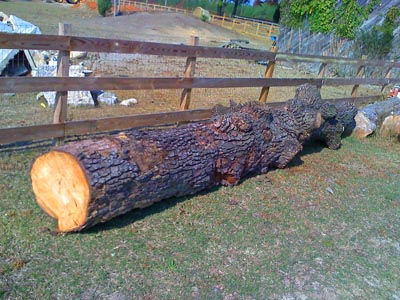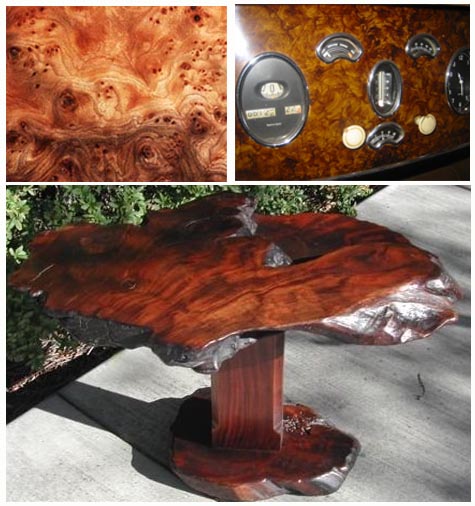 |
|
Finishing your own Walnut lumber
Handyman Tips by Donald Burleson
|
As a follow-up to my post on
processing your own Oak, I finally harvested the old walnut tree!
I guess I?m a tree hugger at heart, and I could not bear to
kill a tree that managed to survive for more than 200 years. It was an
almost-dead, ugly, scary ole tree, like the ones in the Tim Burton films and
we?ve been waiting for years for this decrepit old tree to die of natural
causes. Well, the old walnut tree finally died, and it's all mine!

Walnut log 200-300 yrs old, approximately 2,300 lbs.
While I?m sad to see it die, I?m thrilled because we can
finally open-up the fallow meadow. We could never use it because Walnut trees
are highly
toxic to horses.
The best part is the stump, about another full ton of burl
Walnut! I love burl wood, it's beautiful and rich with amazing grain swirls,
and I now have a huge chunk, enough for a massive hand-carved chair. Once I get
into it, I may decide to slice the burl into a half inch veneer, and use it as
capstones on our Oak walls. There are many uses for burl wood:

Burl wood makes wonderful creations
Now that I have the raw wood, it's time to learn how to
process it into magnificent boards.
Initial Walnut milling
My log weights over a ton (about 2,300 pounds) and it's off
to the sawmill for cutting. I chose to cut a 3 x 10 slab from the middle for a
fireplace mantle or an impressive bar top, and I?m saving the other lumber for
custom trim. Any sawmill will process your Walnut log, and some will do it
in-return for half the boards. However, I wanted all of my own wood, so
I'm leaving to the experts the maximize the yield from this ancient tree.
The saw mill will do the rough cut and use a planer for finishing, and the raw
boards will only need to age awhile to bring out their warn brown coloring.
The natural color of Walnut lumber
I was surprised to see that the walnut was a cream color,
not the natural chocolate brown that we see in the lumber stores. Walnut is
aged (and
sometimes steamed) to bring-out the natural dark coloration, and after
cutting, I?ll be stacking the boards for aging and drying.
